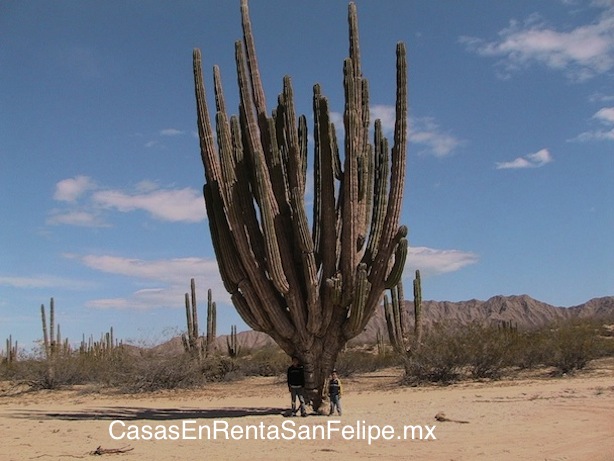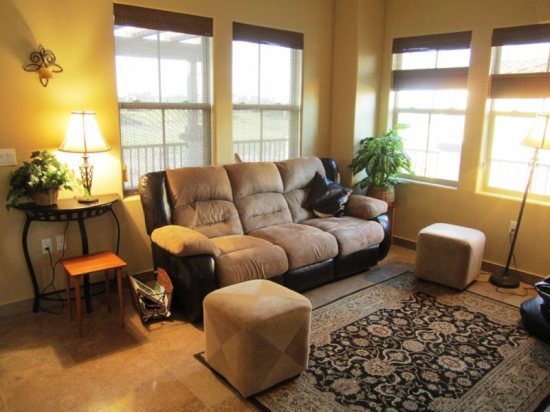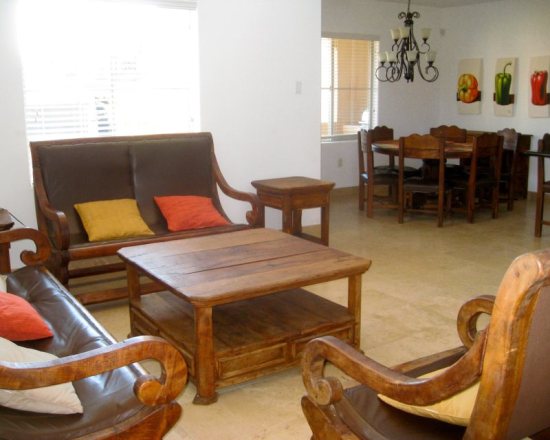San Felipe is home of teasel ( Pachycereus pringlei ), the world's largest cactus. There are approximately 1200 species of cactus , all native to the Americas. The cactus is endemic to the deserts of Baja California. Some of the largest cacti have heights up to 21 meters (70 feet) and weighing 25 tons. It is slow-growing plants that also have longevity , as many of these specimens are more than 300 years.
Its name comes from the term "Thistle " . It is said that when Hernan Cortes tried to establish a settlement in California in 1535 , the presence of many thorny cactus led him the name " Isla Cardon " , given that at that time , it was believed that the peninsula was an island. In Latin, " Pachy " means large and " Cereus " means waxy . One simply has to observe the thick arms of the cactus green - bluish pale and waxy skin to understand why the traveler - American botanist , Cyrus Pringle, decided to name the species that way.
Many first-time visitors confused by this cactus - like environmentally Saguaro (Carnegiea gigantea) , an inhabitant of the Sonoran Desert . However, the saguaro is not in Baja California, and although there are several locations Cardon along the Gulf of California in the Mexican territory , rarely found in Saguaro .
The Sonoran Desert in Baja California can be divided into several sub - regions: San Felipe , Vizcaino , Magdalena, and the deserts of the Gulf Coast. The Cardon has adapted to all the sub - regions and is also found in the dry forests of the Cape. In these areas, the cactus is the dominant plant, and can be found growing in large patches of forest . These large areas of cactus are called " cardonal " .
The cactus grows best in deep soils of the alluvial fans of streams and other water ways. It can be found between sea level and up to 950 meters ( 3200 feet ) elevation , near El Rosario in the north to the tropical Cape region in the south. The cactus covers only frost -free regions of the Baja California desert , being confined to the temperatures of the southern part of Baja California ( 31.2 ° N).
Teasel seeds germinate only in wet - warm conditions , regularly after the summer tropical rains or showers , which bring the greatest amount of precipitation of the season most of these regions. Another limiting factor is the geographical distribution of the seed germination is greater when the air temperature exceeds 40 º C , and the soil temperature does not exceed 70 ° C. The cactus has adapted to the arid conditions of the Sonoran Desert, like many cactus. Has a column shape having a larger surface area in the rays of morning sun and sunset , in contrast to the decrease during the harsh rays of noon. The branching pattern of the limbs maximizes the capture of solar radiation.
The Cardones not need leaves - is a real cladofilo - that performs photosynthesis through the skin , rather than using CSS . The epidermal cells modified from its stem , called clorénqumas that convert sunlight into energy . The loss of water during photosynthesis is reduced by the crassulacean acid metabolism (CAM ) , a photosynthetic method cardón share with other cacti and succulents that inhabit arid regions. These plants Stomata open at night , allowing the cactus to absorb carbon dioxide in the cooler hours of the night, making them very efficient to water .
The main trunk of the cactus can be up to 25 vertical branches with a diameter of 1.5 meters (5 feet). In older plants , the branches are usually higher than the trunk. The cactus is prickly when young, it is thus protected from predators. As it grows , many of its spines break off and not grow back. The lower trunks of older plants turn gray , and cracked the hard shell makes it seem like the thick legs of an elephant. Its vertical woody stem branches follow the cactus to expand and contract like an accordion , storing the water it needs to survive in arid conditions. These cacti have developed extensive surface roots that capture heavy rains in the region.
A large cactus can store a lot of water in their fleshy tissue pulp as its trunk. In order to support its heavy weight , the cactus has a structure of vertical rods wooden frame , very thin but extremely strong, to help maintain its structure. Its wood frame has allowed him to be one of the dominant species of cactus, allowing him to survive in the harsh climate of the Sonoran Desert of Baja California. From March to June, the flowers appear on the tips of the stomata , especially those with direct exposure to the southern sun .
The flowers open in the evenings and at night and keeping close at dawn the next day. The reason for this is that the cactus , like other columnar cactus of southwestern North America, depends on the nightly visits of bats that eat nectar for pollination. Several studies have shown the importance of bats for the reproductive processes of the cactus southwest. For most of these cacti , including cardon cacti are the major pollinator, since no seed production birds, insects or any other visitor during the day . The cactus that depend on these bats for pollination produce flowers usually white or clear, with a shaped opening bell.
The flowers are located in the upper portion of the plant , keeping only open overnight. At the same time produce large amounts of nectar with a distinctive to attract bats aroma, and a thick layer of pollen that covers the edges of the flower. The lower long-nosed bat ( Leptonycteris curasoae ) spends his winters in Mexico . Its annual northward migration occurs just when the flowers of cactus and agaves open in the Sonoran desert.
Nectar production reaches its peak from 8:00 to 10:00 pm Later in the night , bats visit the cactus , cactus surrounding the many times, until finally hovering over one of the open flowers. The bat on his head flower , taking the flower nectar with its long tongue. The large amount of pollen in the vicinity of the rim and flower tube adheres to the hair of the face of the bat . The food session lasts approximately less than one second .
When visiting the bat flower of another plant , starting pollination. The migration of long-nosed bats under the deserts of southern Arizona in late summer is the period of fruiting cactus . Bats feed on the fruits of the cactus , helping to spread the seeds .
Some types of birds also feed on cactus fruit , which has a diameter of 5 cm (approximately the size of a golf ball ) and has golden spines around. The ripe fruit is sometimes cracked, revealing the sweet red flesh . Each fruit contains about 800 black seeds that bats and birds consume along with the pulp. This is crucial to the successful growth of cactus .
For best germination, seeds need specific conditions in which birds and bats involved . Cactus seeds must be " sacrificed " or mistreating your wrap breakable and sprout. The digestive stomach juices consumer help make this possible. Another requirement for the growth of a young mother is a cactus plant. The seed should be set close to another plant or shrub that protects the small cactus of the worst sun angles , like predators. Birds and bats eat the seeds , and then sleep in a tree , depositing the seeds in their droppings killed the nurse plants , hoping the warm summer rains .
In the best of conditions , many seeds germinate to produce a cactus, because the conditions are extreme and collectors prefer to feed on small plants. The growth of these seeds is extremely slow (less than 2.5 cm per year) , and it can take decades for them to grow to a height greater than that of the mother plant. The main threats are mature cactus pasturing cattle , cutting of humans, and a poorly studied , apical application , which causes the breakdown of the tip of the cactus. The disease does not spread , and is currently not a threat to the population of cactus.
The cactus , like other columnar cacti of the Sonoran Desert , has survived the harsh and arid conditions that have existed for thousands of years thanks to its easy adaptation. Future studies may use genetic markers to study the structure of pollination and cactus growth and ecological interdependence with the lowest long-nosed bat . These studies could be crucial to the survival of many species of cactus, and even the same ecosystem of the Sonoran desert.
House ID: Condo 35-3
Ultimate Rental Home - Sleeps 8 Guests Upstairs, you will find a fully stocked chef's kitchen; this opens up to a huge patio overlooking Las Caras de Mexico Golf Course. The BBQ on the patio makes entertaining fun. Also upstairs you will find a big master bedroom with walk-in closet, and bathroom made for luxury living. There is a living room upstairs with flat screen TV and fireplace. Two more bedrooms are on the lower level. One bedroom has a queen bed, and the second bedroom has ....more->Location: San Felipe, Baja California, Mexico
Bedrooms: 3 | Bathrooms: 2.5 | Sleeps: 8
- Regular Rates: $150/nt
- ~ Weekend Rate: $180/nt
House ID: Condo 26-3
Golf Course Accommodation with BBQ Grill The split-level design of the rental home and floor plan is unique to El Dorado Ranch. The front door entrance is at an elevation such that as you walk in the front door, you can go up a few stairs to the upper level, or down a few stairs to the lower level. The upper level features a living room with a flat screen TV and is delightfully decorated. The master bedroom and chef's kitchen are also on the upper level. The chef's kitchen opens up ....more->Location: San Felipe, Baja California, Mexico
Bedrooms: 3 | Bathrooms: 3.5 | Sleeps: 8
- Regular Rates: $140/nt
- ~ Weekend Rate: $180/nt
House ID: Condo 69-4
Paradise 3-bedroom Rental Home Sleeps 6 This rental's intoxicating combination of luxury and modernity is promising many enchanting evenings for all who have an opportunity to stay here. There is an outside patio with an in-build BBQ grill and seating for all. Everyone can meet up poolside for coffee and breakfast and occasional live music. Other entertainments in walk distance include the private beach, tennis courts, 18-hole golf course and lots more. To reserve any of our San ....more->Location: San Felipe, Baja California, Mexico
Bedrooms: 3 | Bathrooms: 3.5 | Sleeps: 6
- Regular Rates: $140/nt
- ~ Weekend Rate: $170/nt

 Menu
Menu









